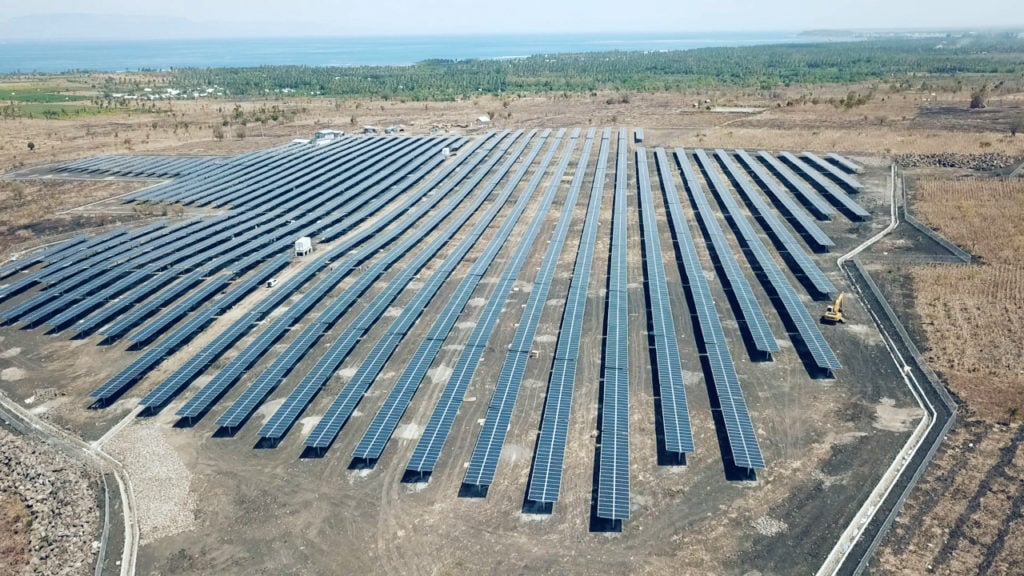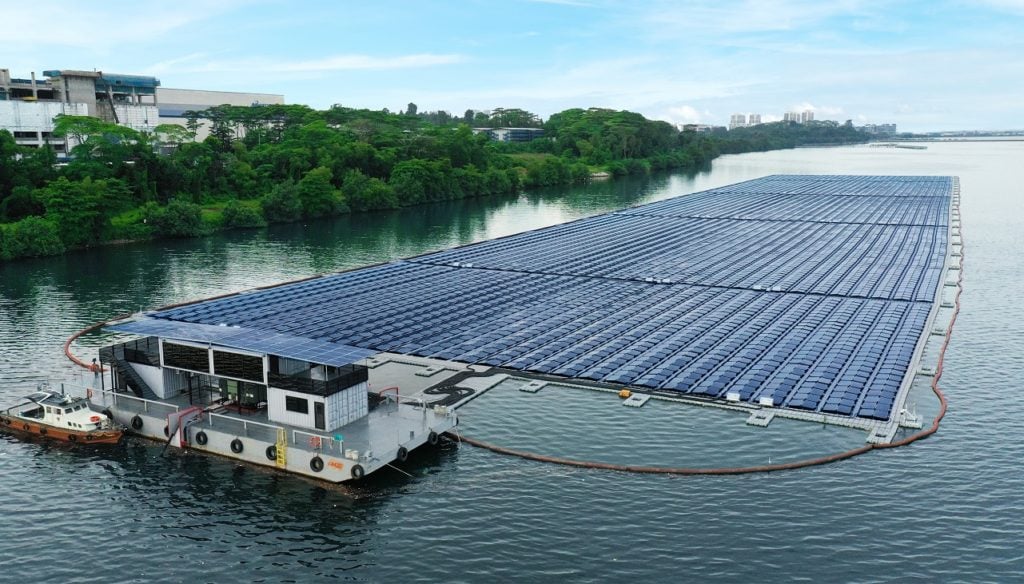
Singapore is grappling with the need to decarbonize without enough land to plant renewable plants. As governments seek to import energy, Jules Scully examines energy import projects and the cooperation behind them.
With limited space to install renewable energy projects and 95% of electricity currently generated from natural gas, Singapore is betting heavily on importing clean electricity to boost energy security and support regional decarbonization efforts. .
The city-state announced in October 2021 its intention to import up to 4 GW of low-carbon electricity by 2035, which should cover a third of its electricity supply.
Trade and Industry Minister Gang Kim Young said at the time that the country's energy transition would be particularly difficult because the country has little wind, hydroelectric and tidal power, high cloud cover and potential solar terrestrial.
He explained that even if Singapore were to increase the amount of space available for solar installations, it would not be able to generate enough electricity through technology alone, including improved efficiency.
“The only way to achieve meaningful results is to use low-carbon energy from our coasts,” he said. "Low-carbon energy imports will be a key driver of Singapore's energy transition in the medium term."
In June, Singapore began importing its first renewable energy, using interconnectors through Thailand and Malaysia to achieve a major milestone with the construction of a 100 MW hydropower plant in Laos. Singapore's Energy Market Authority says the project is part of its effort to pave the way for increased imports.
According to electricity import guidelines released by the AMA in July, importers must bid on the electricity market and compete for secure half-hourly delivery to the Singapore grid.
For projects from intermittent generation sources, the electricity must be exported at the same time as the imported electricity and must achieve a minimum load factor of 75% per quarter during the five years of operation of the plant.
And with domestic production currently accounting for 90% of supply, the EMA said any imported supply meets the same level of supply, making it equally reliable.
These rules are evident in the draft proposals for Battery Energy Systems (BESS) so far.
Xu Yeo Li, deputy director of the energy and renewable energy sector at financial information provider S&P Global Commodity Insights, said the energy import policy has attracted a lot of interest so far, with 20 proposals received in the first Request for Proposals (RFP). The imported projects, a significant number of which are in Indonesia, have more solar panels.
The first tender, launched last November, resulted in proposals from four countries - Indonesia, Laos, Malaysia and Thailand - to supply electricity from solar, wind, hydro and geothermal. A second request for proposals was issued in July, requiring bidders to demonstrate the credibility, reliability, track record and price competitiveness of their bids.
After receiving a request for more time for bidders to prepare their proposals in the first round of tenders, the EMA said it would combine the two rounds of tenders in a more streamlined.
Developers join forcesPlanned developments so far include a 7 GWp solar array and over 12 GWh of energy storage on the Riau Islands in Indonesia. The consortium behind the installation, led by Singaporean developer SunCip, is to connect the planned underground cable solar systems with 2.2GW of floating PV panels from various islands, rather than supplying 1GW. Uninterrupted power supply.
“Energy storage allows us to provide consistent, high-quality electricity to our customers in a very reliable manner. This allows us to provide electricity 24/7.
Sunsep previously said the alliance wanted to capture 20-25% of Singapore's 4G electricity supply in a bid to import low-carbon electricity.
Stating that foreigners cannot own land in Indonesia, the spokesperson said EDP Sensep was working with local companies to secure the land: "Obtaining the necessary permits and licenses is very important and good progress has been made. been made in this regard".
When Minister Gang Kim Yong announced the electricity import policy last year, he warned that imported electricity could not mean cheaper electricity for Singapore. They explained that while the cost of production is low, the cost of transmission and backup, as well as the cost of necessary network upgrades, will add to the overall cost. "This is an inevitable but important shift in marketing power," he said.
A SunSip spokesperson said that while the merger would require significant capital investment, the solar company would maintain stable prices for its customers and not depend on the volatility associated with fossil fuels. "It's about the reliable and stable supply of clean energy that our customers desperately need to avoid the risk of fluctuating energy prices."
Sun Cable, the company behind the development, which claims to send 2 GW of electricity from Australia to Singapore via 4,200 km of high voltage direct current (HVDC) cable, predicts "commercially acceptable" transmission losses, said project director Andrew Barton. Loss calculation is also a function of cost-benefit analysis, as different design options affect transmission losses.
SunCable's Australia-Asia PowerLink will include 17-20 GW of solar power and 36-42 GW of battery storage in northern Australia, the company said.
Advances in renewable power generation, energy storage and HVDC cable technology have made long-distance transmission of renewable electricity commercially and technically feasible, Burton explained. He says HVDC “has been developed to the point where 525 kW voltage is high enough to support projects that require power transmission over long distances.”
The underground cable will cross Indonesian waters and the country's authorities will grant Sun Cable an underwater exploration permit in September 2021. But in May, Indonesia did not issue a permit or other official license to the energy company, writes financial analyst Elrika Hamdi. at the Institute for Energy Economics and Financial Analysis (IEFA) in a recent comment. "They failed to get a license for the undersea cable, which is a critical component."
Another consortium planning to export renewable energy from Indonesia to Singapore is Masdar Renewables of Abu Dhabi and EDF Renewables of France, whose contract calls for producing 1.2 GW of solar PV and "connected storage".
The partners released limited information about the project, including its planned location in Indonesia and the number of generations it plans to send to Singapore. According to EDF Renouveau, the company and its partners are working on the development of the project, but it is at a "very early stage".
"We are still working with our partners to assess the best options for all stakeholders and prefer not to discuss specifics at this stage," Masadar said in a statement.
Their consortium includes Singapore's Tuas Power and PT Indonesia Power, which is part of the Indonesian utility PLN. When details of the project were revealed earlier this year, PT Indonesia Power said it was an "important partner for Indonesia's energy exports".

According to IEFA Hamdi, PLN and Batam branch of PLN are the only two companies allowed to export power from Indonesia without additional licensing process. In a recent comment, he wrote that obtaining the necessary electricity export licenses is time-consuming and difficult, and that “significant risks remain for existing bidders, especially those that do not include subsidiaries PLN in consortia".
Another consortium involving PLN subsidiary PLN Batam was announced last year by Singaporean energy company Sembcorp Industries, which also includes Indonesian renewable energy developer PT Trisurya Mitra Bersama. An agreement has been signed to build 1 GW of solar power and energy storage on the Riau Islands in Indonesia.
Additionally, developers looking to export power from the Rio Islands to Singapore include Quantum Power Asia and EB Vogt, which plan to build a 3.5 GW and 12 GWh solar storage system. In a joint venture between the companies, the Singapore companies have committed to supply over 4 TWh of net imported electricity to the 4,000 hectare facility.
Finding land or water to build projects on the Riau Islands "won't be too difficult," said IEEFA's Hamdi, adding that some developers have already found suitable land. Another challenge, he said, is testing the political will of the Indonesian government to provide power to Singapore.
Consortium project proposal in IndonesiaPotential project developers thought they were in a position to set up their renewable energy export projects in Indonesia after the Malaysian government announced last year that only non-renewable energy would be allowed to be exported to Singapore, while electricity would be sold through self-developed transmission lines. and means of communication. The city-state will be banned.
Malaysia's energy ministry said the decision was made to encourage local renewable energy development by expanding the country's net solar metering initiative following the announcement.
In January, Singapore and Indonesia signed a memorandum of understanding on energy cooperation, covering areas such as solar project development, cross-border energy interconnections and human resource development.
However, comments from Indonesian Investment Minister Bahlil Lahadalia suggest the government is considering parts of the collaboration. He said the country will not export renewable generation, but will mainly focus on domestic demand. "We haven't thought about exporting [renewable energy] yet," the minister said in May.
Daniel Kurniawan, an Indonesia-based solar energy analyst at the Basic Services Reform Institute, said there had been "tremendous changes" since Indonesia announced a joint development agreement with Singapore last year. last.
The current situation, Kurniawan explained, "seems that the Indonesian government does not give clear guarantees for the development of solar energy", which is a "big obstacle".
IEEE's Hamdi took a similar view, saying Bahlil's comments should worry solar panel developers.
He said one of the important issues for the Indonesian government is the construction of the submarine cable. "It's another hurdle for the Indonesian government to decide whether they want to go ahead or not."
Analysts also warn that neighboring countries' strategy to send new renewable energy sources to Singapore could hinge on their fossil fuel production.
"That's definitely a concern, especially if the exporting country doesn't currently have a lot of renewable energy," said Joo Lee of S&P Global Commodity Insights. "This is also one of the reasons why Malaysia has banned the export of renewable energy from Peninsular Malaysia to Singapore."
According to the energy major bp, coal is becoming increasingly dominant in domestic electricity production in Indonesia with a 66% share in 2020, compared to 6.1% for renewable energies. Statistics from the International Renewable Energy Agency show that in 2021, only 211 MW of solar power was installed in Indonesia.
However, significant foreign investment in new renewable energy projects could help revive Indonesia's renewable energy sector, Ju Yeo Lee said, especially if governments can strike deals to support renewable energy development in their countries. .
Kurniawan believes Indonesia's proposed solar power export project could support local EPC growth, while regulators could also benefit as they work on cross-border power exports.
This adds to the potential for job creation. For example, the joint venture between Quantum Power and ib vogt could create up to 30,000 new jobs in the Riau Islands.
When Singapore began importing electricity from a Lao hydropower plant in June, the EMA said it would serve as a guide to realizing the broader vision of the ASEAN power grid on multilateral energy trade. beyond neighboring countries in the region.
Hamdi said the pilot project lasted at least eight years, which shows how difficult it is to transmit electricity from one place to another.
He added that although ASEAN countries have been discussing regional energy interconnection for a long time, it has not been easy to implement due to energy security, transmission and political issues.



